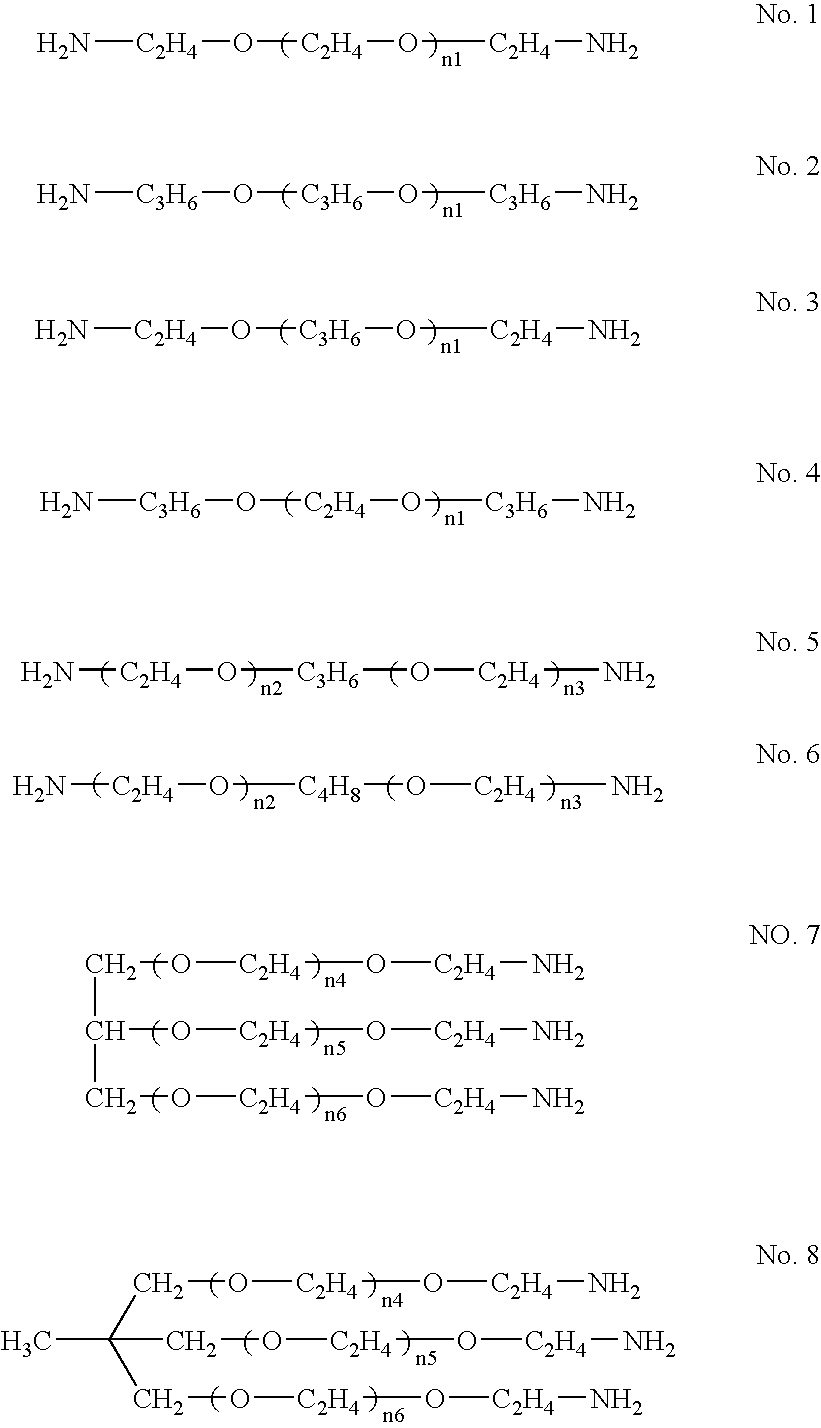Acrylic sol composition
- Summary
- Abstract
- Description
- Claims
- Application Information
AI Technical Summary
Benefits of technology
Problems solved by technology
Method used
Image
Examples
preparation example 2
Preparation of Blocked Polyurethane (BU-2)
[0069] In a reaction vessel were charged 400 g of diisononyl phthalate, 499 g of glycerol tris(polypropylene glycol) (molecular weight: 4000) and 0.025 g of dibutyltin laurate and subjected to dehydration reaction at 100° to 110° C. under reduced pressure of 30 mmHg for 1 hour. The reaction mixture was cooled to 60° C., and 65 g of 1,6-hexamethylene diisocyanate was added thereto, followed by allowing the mixture to react in a nitrogen atmosphere at 60° to 70° C. for 3 hours. The reaction system was cooled to 60° C., and 33 g of methyl ethyl ketoxime was added thereto dropwise, followed by aging at 80° to 90° C. for 1 hour, and followed by degasification at 100° to 110° C. under 30 mmHg for 1 hour.
[0070] After confirming complete disappearance of the NCO absorption at 2660 cm−1 in the IR spectrum, blocked polyurethane, designated BU-2, was obtained.
preparation example 3
Preparation of Blocked Polyurethane (BU-3)
[0071] In a reaction vessel were charged 400 g of diisononyl phthalate, 482 g of glycerol tris(polypropylene glycol) (molecular weight: 4000), and 0.025 g of dibutyltin laurate and subjected to dehydration reaction at 100° to 110° C. under reduced pressure of 30 mmHg for 1 hour. The reaction mixture was cooled to 60° C., and 84 g of isophorone diisocyanate was added thereto, followed by allowing the mixture to react in a nitrogen atmosphere at 60° to 70° C. for 3 hours. The reaction system was cooled to 60° C., and 33 g of methyl ethyl ketoxime was added thereto dropwise, followed by aging at 80° to 90° C. for 1 hour, and followed by degasification at 100° to 110° C. under 30 mmHg for 1 hour.
[0072] After confirming complete disappearance of the NCO absorption at 2660 cm−1 in the IR spectrum, blocked polyurethane, designated BU-3, was obtained.
preparation example 1
Preparation of Blocked Isocyanate
[0073] In a reaction vessel was put 600 g of diisononyl phthalate and dehydrated at 100° to 110° C. under reduced pressure of 30 mmHg or less for 1 hour. Coronate 2030 (tolylene diisocyanate in nurate form, available from Nippon Polyurethane Industry Co., Ltd.) was added thereto, and the mixture was heated at 130° to 140° C. under 30 mmHg or less for 4 hours to remove butyl acetate. ε-Caprolactam and dibutyltin laurate were added to the reaction mixture, and the mixture was allowed to react at 130° to 140° C. and 4 hours.
[0074] After confirming complete disappearance of the NCO absorption at 2660 cm−1 in the IR spectrum, blocked isocyanate, designated BI-1, was obtained.
PUM
| Property | Measurement | Unit |
|---|---|---|
| Temperature | aaaaa | aaaaa |
| Structure | aaaaa | aaaaa |
| Electrical resistance | aaaaa | aaaaa |
Abstract
Description
Claims
Application Information
 Login to View More
Login to View More - R&D
- Intellectual Property
- Life Sciences
- Materials
- Tech Scout
- Unparalleled Data Quality
- Higher Quality Content
- 60% Fewer Hallucinations
Browse by: Latest US Patents, China's latest patents, Technical Efficacy Thesaurus, Application Domain, Technology Topic, Popular Technical Reports.
© 2025 PatSnap. All rights reserved.Legal|Privacy policy|Modern Slavery Act Transparency Statement|Sitemap|About US| Contact US: help@patsnap.com



